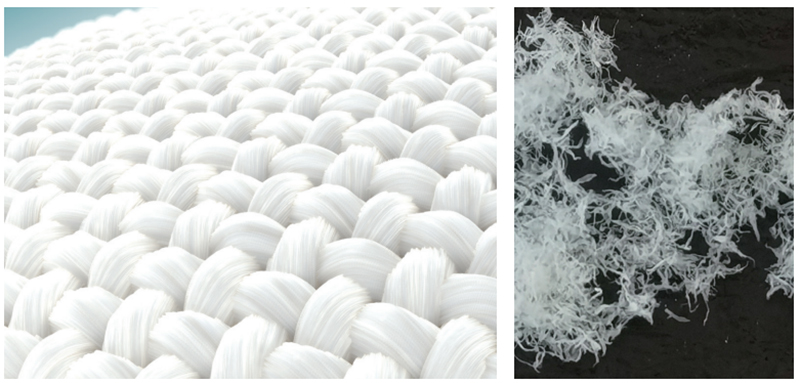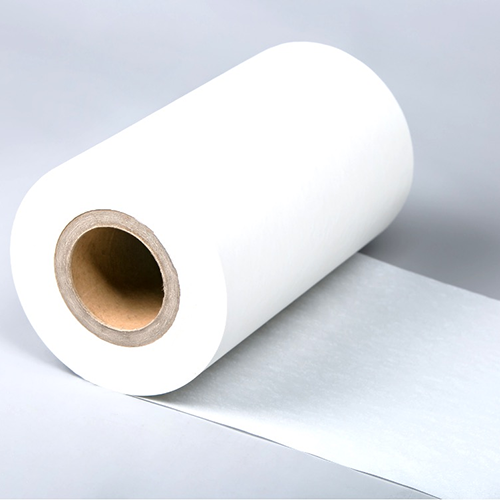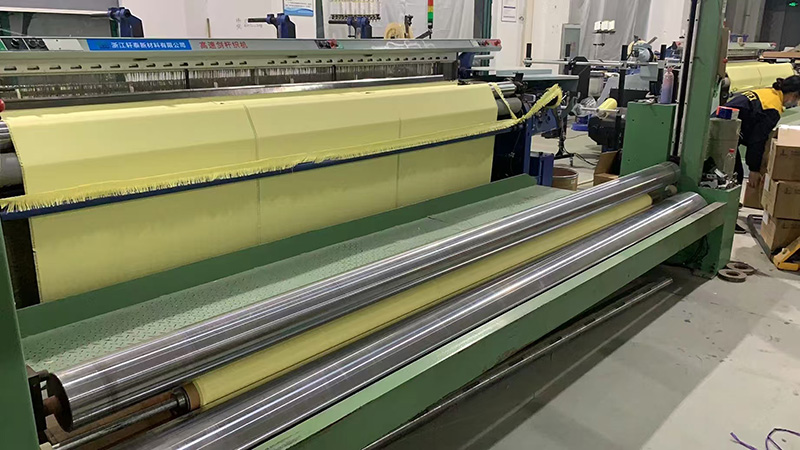Aramid fibers Introduction
Aramid fibers were the first organic fiber synthesized with high strength and stiffness, and they are good candidates to replace asbestos [53]. Along with mechanical properties that are superior to steel or metal wires of equivalent weight, aramid fibers possess outstanding heat resistance. Therefore, these fibers are used to fabricate composites with advanced mechanical and flame resistant properties such as protective clothing, aircraft, automobiles, rope for off-shore oil rigs, industrial fillers, and bullet proof jackets.

According to the U.S. Federal Trade Commission, an aramid fiber is any fiber in which the forming substance is a long-chain synthetic polyamide in which less than 85% of the amide linkages (-CO-NH-) are directly connected to two aliphatic groups. Kevlar, Technora, Heracron, Twaron, Nomex, and Teijinconex are the trade names for aramid fibers, among which the first four are examples of para-aramids, while the latter are meta-aramids [54].
The type of aramid (para- or meta-) depends on the position of the chemical bond. Para-aramids have bonds aligned in the long direction of the fiber, while meta-aramids have bonds in a zigzag pattern. Therefore, para-aramids exhibit better mechanical strength (3–7 times) than meta-aramids along with high flexibility and abrasion resistance. In contrast, meta-aramids exhibit superior heat, flame, chemical, and radiation resistance. Additionally, meta-aramids show good dissipation of energy perpendicular to the fiber and are consequently used in bullet-proof jackets and personal armor [55].
Aramid fibers can be used in load bearing applications because they have a higher tensile strength than steel and high stiffness [53]. Aramid fibers are low in density (lighter than glass fibers) and show a low creep rate. The energy absorption at failure (half of nylon) and shock resistance are attractive features of aramid fibers. Additionally, flame retardation and non-conductivity make aramid fibers suitable for safety clothes and insulator materials, respectively. The abrasion resistance of aramid fibers is better than that of glass and carbon fibers. However, there are some drawbacks of aramid fibers including their sensitivity to UV rays, poor compression strength in comparison to carbon fibers, and problems associated with cutting the fibers.
Due to their properties, aramid fibers can be used in protective clothing and helmets, bullet-proof jackets, body armor, drumheads, speaker woofers, ballistic applications, and flame-resistant suits and gloves.

Read more about the Aramid fibers
Aramid fibers are aromatic polyamide fibers, containing more than 85% amide bonds directly connected with the two aryls. This kind of fiber has the following advantages: lightweight, high-strength, high-modulus, high-temperature resistance, and excellent corrosion resistance.
The strength and modulus of aramid fibers is five to six times and two to three times, respectively, higher than that of steel wires with the same diameter, while the weight is only approximately one-fifth of the steel wire. The decomposition temperature is 560°C. There are two types of aramid fibers, namely, meta-aromatic and para-aromatic polyamide.
For meta-aromatic polyamide, the angle between the amide plane and the phenylene plane is 30 degrees, resulting in the most stable structure. The rotation energy barrier of the phenyl–amide bond and the carbon nitrogen (C–N) bond is high, leading to fully extended chains. Furthermore, the existence of strong hydrogen bonding can further enhance the stability of the chemical structure of aramid fibers.
The crystalline structure of para-aromatic polyamides is pseudo-orthorhombic, and the macromolecular chains are fully extended in the crystalline region. The angle of HN–O is 160 degrees, which is favorable for the formation of intermolecular hydrogen bonding. These unique structures give excellent physical and chemical properties, but also bring some problems: a high degree of crystallinity, a smooth surface, and a lack of chemically active groups, resulting in poor adhesion strength between the aramid fiber and the resin matrix. Therefore, it is necessary to modify the fiber surface for practical applications.




